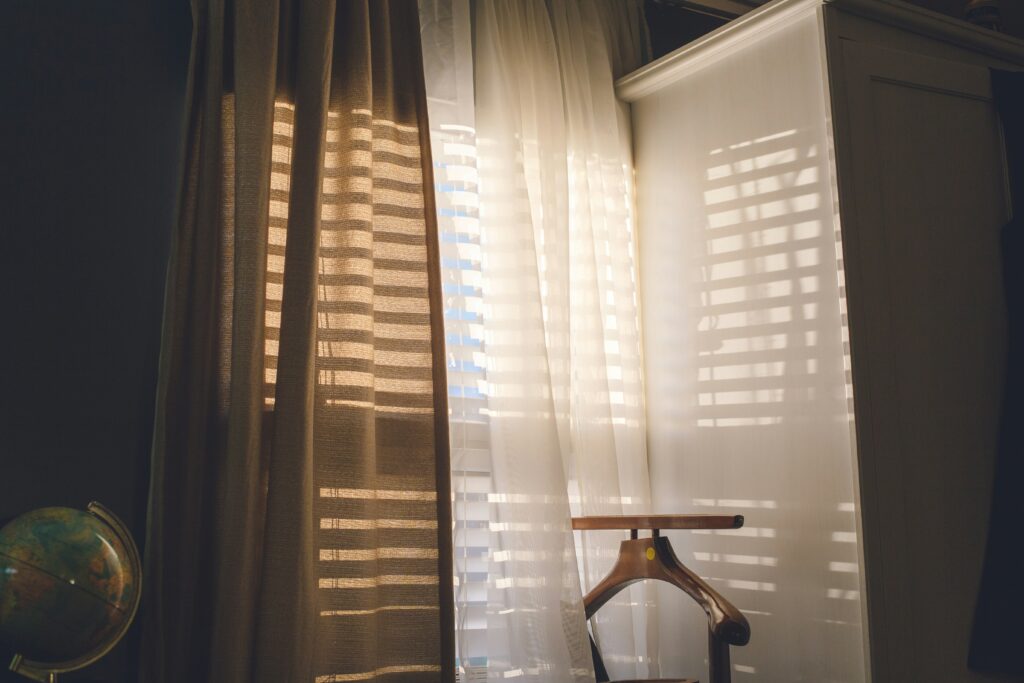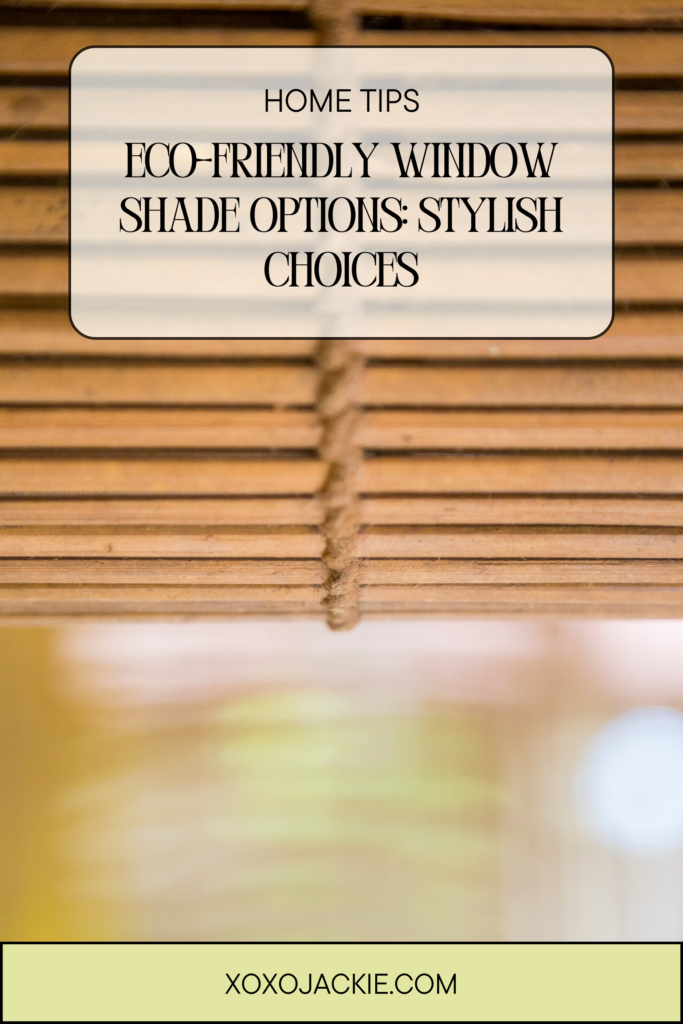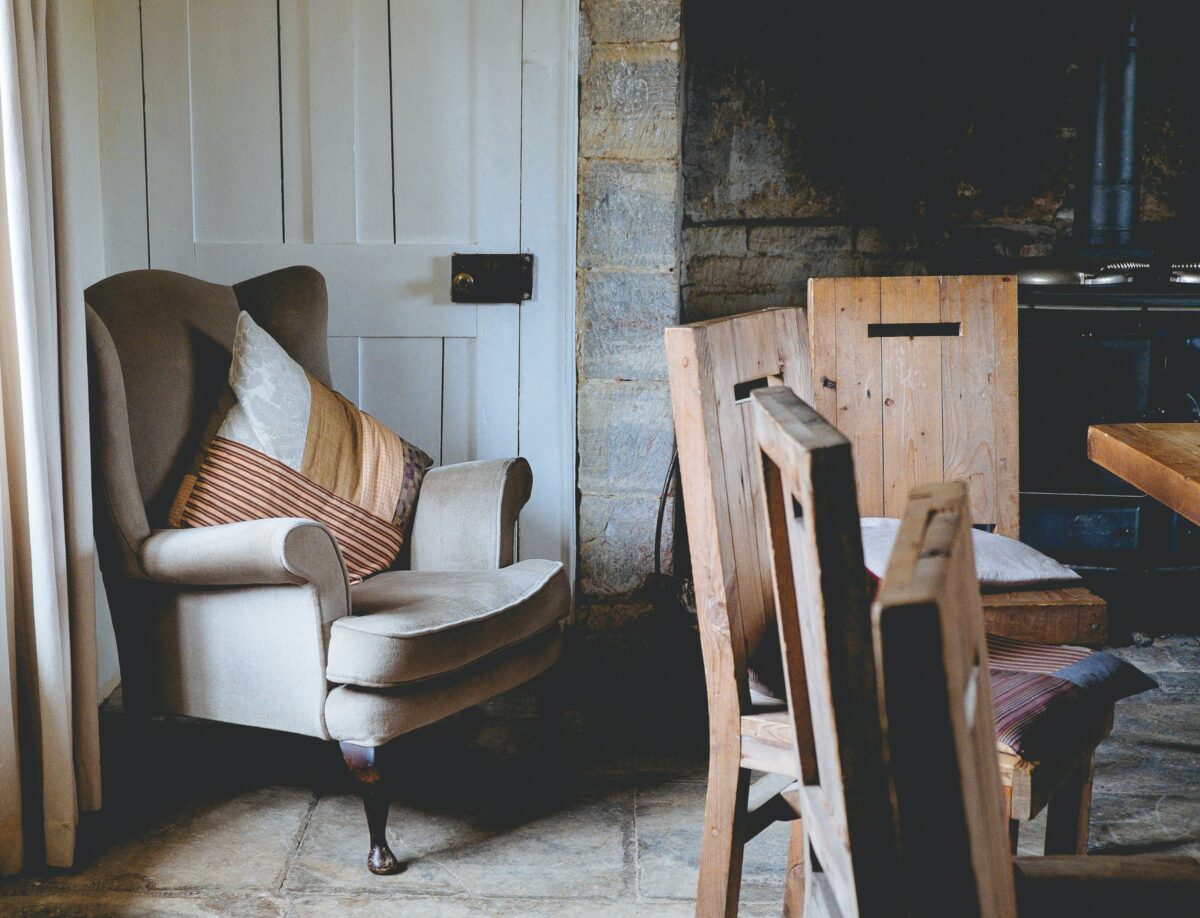In today’s environmentally conscious world, making eco-friendly choices in home decor is more important than ever. Window shades are no exception. Choosing the right eco-friendly window shade adds style and character to your home and plays a vital part in promoting sustainability.
This guide explores various stylish, eco-friendly window shade options that beautify your space and contribute positively to the environment. From natural materials to energy-efficient designs, discover how you can make a difference with your decor choices.

Natural Materials
One of the most popular ways to make your window shades more eco-friendly is by selecting natural materials. These materials come from renewable sources and have minimal environmental impact during production. Some popular natural options for window shades include bamboo, jute, and hemp.
Bamboo shades are stylish and highly sustainable, as bamboo is one of the fastest-growing plants in the world. It’s also durable and versatile, making it an excellent choice for window shades.
Jute is another natural material gaining popularity due to its earthy texture and organic look. Conversely, hemp is a highly sustainable option as it requires less water and pesticides than other crops.
Energy-Efficient Designs
Another way to make your window shades eco-friendly is by choosing energy-efficient designs. These are designed to reduce the heat and light entering a room, making them ideal for reducing energy consumption in your home. Some popular options include honeycomb shades, solar shades, and thermal curtains.
Honeycomb shades have a unique cellular design that creates air pockets, providing insulation and keeping your home cooler in the summer and warmer in the winter. Solar shades are designed to reduce solar heat gain and UV radiation while allowing some natural light into your space.
Thermal curtains also provide insulation and can help reduce drafts, making them an excellent option for colder climates.
Recycled Materials
Choosing window shades made from recycled materials is another eco-friendly option. These materials are made from post-consumer waste, reducing the need for virgin resources and promoting recycling practices. Some popular examples include shades made from recycled plastic bottles or fabric scraps. Wood blinds made from reclaimed wood are also an excellent option for those who prefer a more rustic look.
DIY Options
For those who enjoy getting creative and saving money, DIY options for eco-friendly window shades are a great choice. You can upcycle old fabric or repurpose materials like newspaper or cardboard to create unique and stylish window coverings. Not only does this promote sustainability, but it also adds a personal touch to your home decor.
Additional Factors to Consider
- Sustainability Certifications: Look for window shades with certifications from reputable organizations, such as the Forest Stewardship Council (FSC) for wood products or the Global Organic Textile Standard (GOTS) for textiles. These certifications ensure that the materials used are sustainably sourced and produced according to high environmental standards.
- Durability and Longevity: Selecting window shades that are durable and can last many years is essential. Durable products reduce the need for frequent replacements, thereby minimizing waste and promoting sustainability over time. Materials like bamboo and high-quality fabrics are known for their longevity.
- Energy Savings Potential: Evaluate how well the window shade options can contribute to energy savings in your home. Energy-efficient designs, such as honeycomb shades and thermal curtains, can significantly reduce heating and cooling costs by insulating your windows effectively.
- Ease of Maintenance and Cleaning: Consider how easy it is to maintain and clean the window shades. Eco-friendly shades should be made from sustainable materials and easy to care for without the need for harsh chemicals or specialized cleaning processes.
- Recyclability at End of Life: Look into whether the window shades can be recycled at the end of their life cycle. Choosing materials that can be easily recycled helps to ensure that the shades won’t end up in a landfill, further contributing to a cycle of sustainability.
How to Choose the Right Shades
When choosing the right eco-friendly window shades for your home, consider the following factors to ensure you make a selection that aligns with both your environmental values and aesthetic preferences:
- Light Filtering vs. Blackout: Decide whether you need shades that simply filter sunlight, maintaining a light, airy feel in the room, or blackout shades for complete privacy and darkness.
- Room Style and Decor: Ensure the shades you choose complement your existing room style and decor. Eco-friendly materials offer a range of aesthetics, from modern bamboo shades to rustic jute fabrics.
- Window Size and Shape: Measure your windows accurately to ensure a perfect fit. Also, consider any unique window shapes or sizes requiring custom solutions.
- Budget: Set a budget beforehand, as eco-friendly and sustainable options can sometimes come at a premium. However, remember that investing in quality shades can lead to long-term savings in energy costs.
- Installation and Operation: Consider the ease of installation and what type of operation suits your needs best, whether it’s manual pull cords, continuous loop chains, or motorized systems.
- Privacy Needs: Evaluate the level of privacy you require. Some materials and designs offer more coverage and opacity than others, making them more suitable for bedrooms and bathrooms.
- Safety Features: If you have children or pets, look for cordless options or shades with safety features to prevent accidents.
Conclusion
Choosing eco-friendly window shades benefits the environment and adds style and functionality to your home. With various sustainable materials, energy-efficient designs, and DIY options, you can find the perfect shades that align with your values and personal preferences.
Remember to consider additional factors such as sustainability certifications, durability, ease of maintenance, recyclability at the end of life, and your specific needs when selecting. Doing so can create a more sustainable and stylish living space for yourself and future generations.





